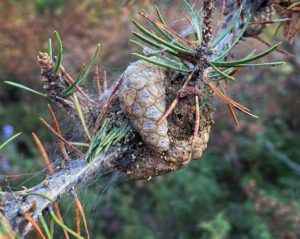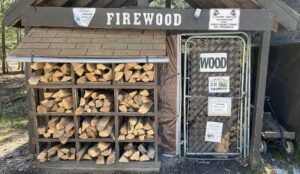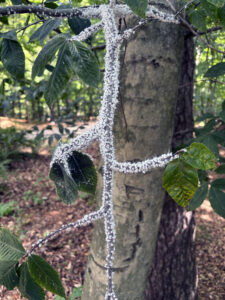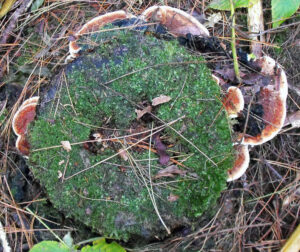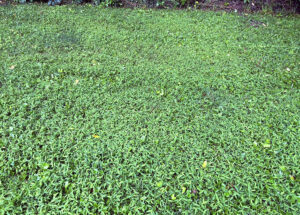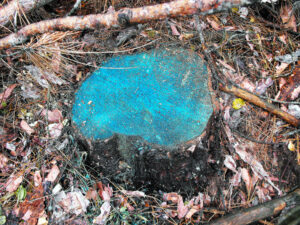
A freshly cut tree stump after treatment with fungicide to prevent infection with Heterobasidion root disease. The fungicide is dyed blue to help ensure complete coverage. / Photo Credit: Wisconsin DNR
By Tim Shively, DNR Forest Health Specialist, Eau Claire
Timothy.Shively@wisconsin.gov or 608-772-6974
Treating freshly cut conifer stumps is critical to preventing infection by Heterobasidion species, causal agents of Heterobasidion root disease (HRD).
Within this genus, H. irregulare is believed to be the only species in Wisconsin, and it causes the mortality of overstory pine and spruce trees. The DNR has developed comprehensive guidelines to assist landowners, property managers, foresters, and loggers with determining whether stump treatments are necessary to prevent the introduction or spread of HRD at a given site.
Continue reading “Stumping Heterobasidion Root Disease With Cellu-Treat®”

